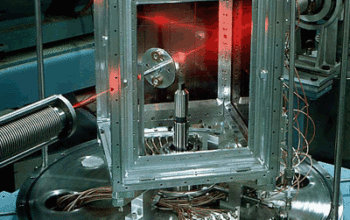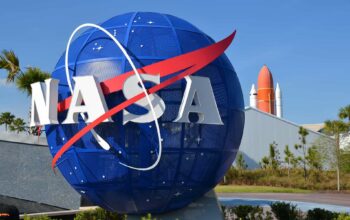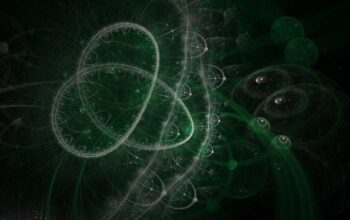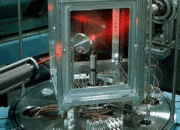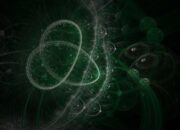In the realm of quantum mechanics, the phenomenon of entanglement epitomizes the enigmatic nature of the universe. It challenges classical intuitions regarding separability and locality, presenting a tantalizing intersection of probability and deterministic behavior. As we delve into the synthesis of quantum mechanics with classical vibrations, a provocative question emerges: Can mechanical vibrations exhibit entanglement akin to their quantum counterparts? This inquiry not only invites exploration into the depths of physical theory but also poses intriguing challenges that could redefine our understanding of both domains.
Entanglement, a cornerstone of quantum theory, describes a quantum state wherein pairs or groups of particles become interlinked, such that the state of one particle instantaneously influences the state of another, regardless of the distance separating them. This phenomenon, starkly at odds with classical physics, raises profound questions about the fabric of reality and the interconnectedness of matter. Classical systems, however, typically adhere to Newtonian mechanics, which governs macroscopic vibrations through principles of energy and force. The striking divergence between quantum entanglement and classical mechanics therefore prompts a deeper examination into whether mechanical systems can transcend their classical boundaries.
The concept of mechanical vibrations revolves around oscillatory motion, typically characterized within the framework of classical physics. A tuning fork, for instance, vibrates at specific frequencies, producing sound waves which propagate through a medium. However, as quantum theory increasingly finds applicability in macroscopic systems—augmented by advancements in technology—questions regarding the potential for entanglement in mechanical vibrations gain credibility. Can indeed a mechanical object, such as a vibrating membrane or a resonating cavity, become entangled in a manner characteristic of quantum particles?
Recent experimental investigations into quantum vibrations have provided tantalizing evidence that classical-like systems may exhibit entanglement-like behavior. Consider the case of micro-mechanical systems, such as suspended mirrors in gravitational wave detectors. These devices rely on extreme precision in measurements, pushing the envelope of classical understanding toward quantum limits. Quantum superposition has been demonstrated in such systems, suggesting that classical vibrations may become intertwined with quantum phenomena, albeit under specific constraints. This raises an essential challenge: How do we reconcile the macroscopic world of vibrations with the inscrutable oddities of quantum mechanics?
One potential avenue for inquiry lies in the concept of phonons, the quantized modes of vibrations in a solid. Phonons, which embody energy quanta within vibrational modes, draw parallels with photons in light. As researchers probe deeper into the properties of phonons, the possibility of entangled phonon states presents intriguing prospects. Imagine a scenario where mechanical vibrations of a crystal lattice become interdependent, thus leading to a non-local correlation akin to quantum entanglement. Such a concept aligns with the overarching principle that the underlying characteristics of matter may allow for entanglement to manifest, even in classical regimes.
Yet, this hypothesis is not without its challenges. A critical consideration is the disruptive role of decoherence—a process wherein quantum systems lose their coherent superposition states due to interactions with their environment. For mechanical systems, the broader implications of external perturbations loom large. Vibrations often intertwine with thermal noise and dissipation, potentially erasing any emergent quantum characteristics. Thus, a prominent question arises: What mechanisms can be employed to shield mechanical systems from decoherence, thereby fostering a conducive environment for entanglement?
The quest for isolating mechanical vibrations from environmental disturbances invites innovative strategies. Techniques such as quantum squeezing and feedback control emerged as potential strategies for maintaining coherence in mechanical oscillators. Furthermore, recent advances in optomechanics—the coupled dynamics between optical and mechanical systems—illustrate promising experiments that may elucidate the entanglement of mechanical vibrations. By interfacing light and mechanical oscillations, researchers are inching closer toward manipulating phonon states in ways that may unveil latent quantum behavior.
Moreover, the philosophical underpinnings of entanglement and its mechanical manifestations speak to broader implications for our understanding of reality. If mechanical vibrations can indeed engage in entanglement, how does this reshape our conception of information transfer and communication within a mechanical context? It portends a paradigm shift wherein classical systems serve as conduits for quantum information, blurring the long-held boundaries separating classical and quantum realms.
As we continue to explore the nexus between mechanical vibrations and quantum entanglement, it is pertinent to consider the ramifications on technology and theoretical frameworks. Such a synthesis could pave the way for breakthroughs in quantum computing and communications, where mechanical properties are leveraged for processing information at unprecedented scales. How will these advancements impact our everyday experiences and interactions with technology? The implications reach far beyond theoretical musings, hinting at a future where entangled mechanical systems function as robust components of quantum technologies.
Envisioning a world where classical vibrations possess entangled states not only rekindles curiosity within the scientific community but also underscores the importance of an interdisciplinary approach. Physicists, engineers, and philosophers alike must collaborate, sharing insights and innovating methodologies to unlock the mysteries shrouded within mechanical quantum entanglement. This intersection represents not merely an avenue for scientific inquiry, but an invitation to rethink foundational assumptions about the nature of reality itself.
In conclusion, the prospect of mechanical vibrations exhibiting entanglement offers both an inspiring challenge and a profound opportunity for inquiry. The frontier of physics continues to expand, revealing complexities and interdependencies among various realms of knowledge. As researchers investigate this intersection, we must remain vigilant, as each discovery may illuminate a path toward a richer understanding of the universe in which we reside.

